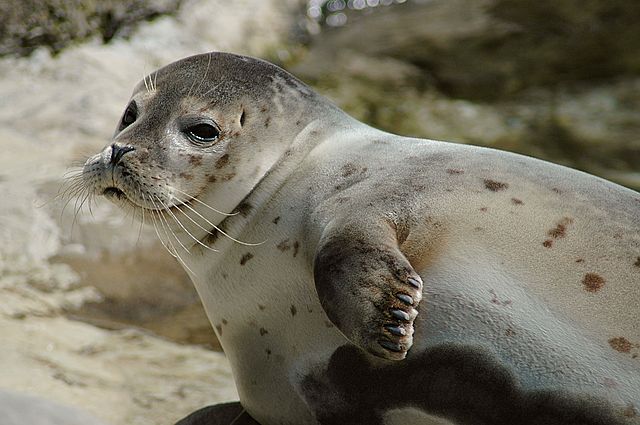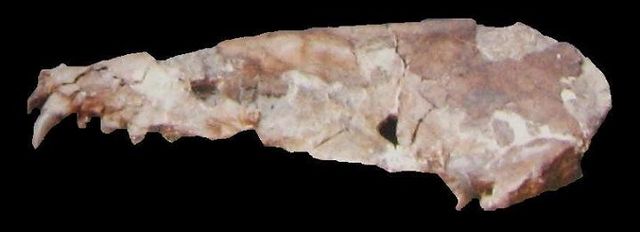The harp seal, also known as Saddleback Seal or Greenland Seal, is a species of earless seal, or true seal, native to the northernmost Atlantic Ocean and Arctic Ocean. Originally in the genus Phoca with a number of other species, it was reclassified into the monotypic genus Pagophilus in 1844. In Greek, its scientific name translates to "ice-lover from Greenland," and its taxonomic synonym, Phoca groenlandica translates to "Greenlandic seal." This is the only species in the genus Pagophilus.
Harp seal
Skull of a harp seal
Whitecoated pup
A weaned harp seal pup
The earless seals, phocids, or true seals are one of the three main groups of mammals within the seal lineage, Pinnipedia. All true seals are members of the family Phocidae. They are sometimes called crawling seals to distinguish them from the fur seals and sea lions of the family Otariidae. Seals live in the oceans of both hemispheres and, with the exception of the more tropical monk seals, are mostly confined to polar, subpolar, and temperate climates. The Baikal seal is the only species of exclusively freshwater seal.
Earless seal
Fossil Pliophoca skull
Skeletal anatomy of a harbor seal. 1. Skull. 2. Spine. 3. Tail. 4. Hindlimb. 5. Forelimb. 6. Shoulder. 7. Pelvis. 8. Rib cage.
Harbor seal skull (Phoca vitulina)








